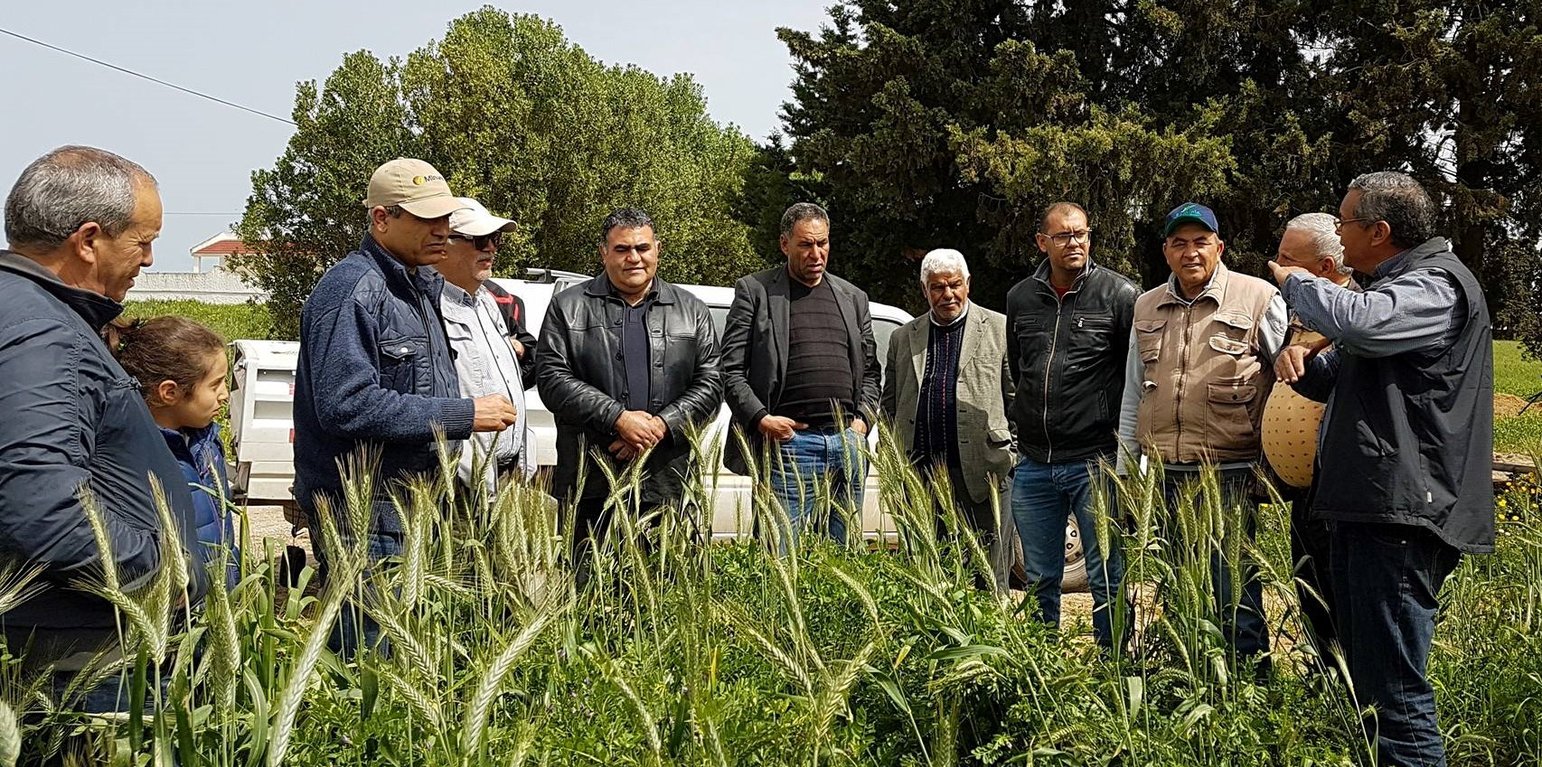Un réseau informel pour l'implémentation de l'agriculture de conservation
(Tunisia)
Le groupe de semis direct
Description
La création d'un réseau informel pour le développement des mesures de conservation des terres en agriculture de conservation.
Les agriculteurs ont remarqué que la fertilité de leurs sols est en continuelle dégradation avec une forte érosion hydrique avec l'augmentation des couts de production tels que le travail du sol, les intrants et les frais d'entretien des matériels agricoles et le cout de gasoil. C'est parce que quand ils ont été sensibilisés par des projets internationaux d'agriculture de conservation, ils ont adopté l'idée de tester les techniques de l'agriculture de conservation et aprés l'adoption totale dans leurs propres parcelles.
Ensuite et grace au support des experts nationaux et internationaux lors des journées d'informations et des écoles champs et des voyages d'échange, s'est formé un réseau informel basé sur des amitiés entre des agriculteurs nationaux et internationaux.
Location
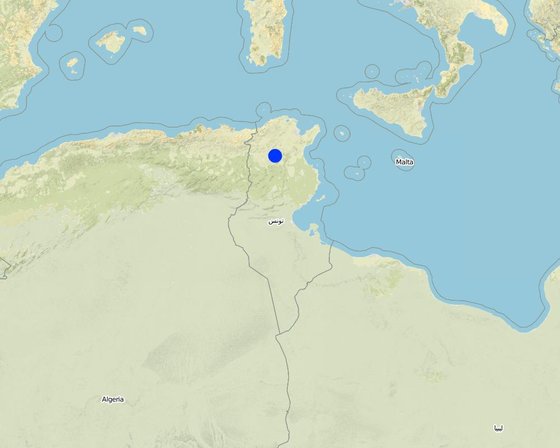
Location: Krib, Siliana, Tunisia
Geo-reference of selected sites
Initiation date: 1999
Year of termination: n.a.
Type of Approach
-
traditional/ indigenous
-
recent local initiative/ innovative
-
project/ programme based
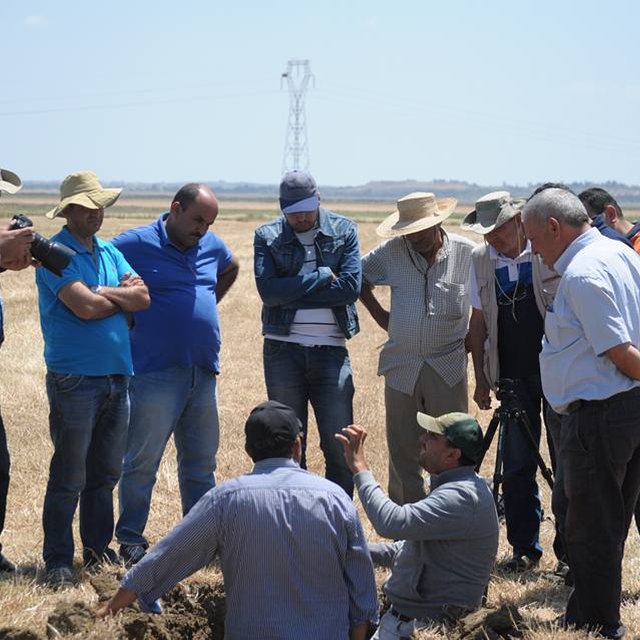
Les agriculteurs évaluent l'effet positif de l'agriculture de conservation sur les propriétés physico-chimiques du sol. (Houcine Angar )
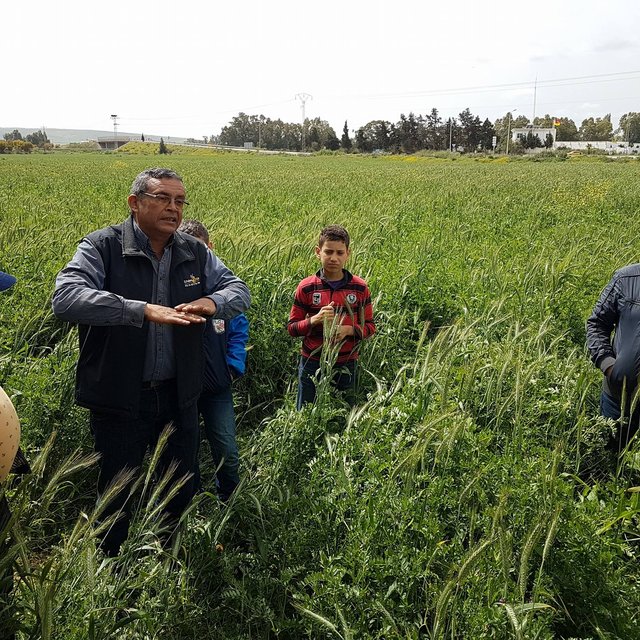
Discussions sur l'utilité et les bienfaits de l'agriculture de conservation dans les champs des céréals. (Houcine Angar )
Approach aims and enabling environment
Main aims / objectives of the approach
Développer les bonnes pratiques / mesures de conservation en agriculture de conservation et partager les expériences et les connaissances.
Conditions enabling the implementation of the Technology/ ies applied under the Approach
-
Social/ cultural/ religious norms and values: Échange et solidarité.
-
Collaboration/ coordination of actors: Collaboration et coordination des agriculteurs et des experts.
-
Legal framework (land tenure, land and water use rights): Encourager l'octroi des subventions spécifiques et le changements des lois et stratégies pour conserver des lois et stratégies pour conserver les sols.
-
Knowledge about SLM, access to technical support: L'agriculture de conservation est trés promotteuse en terme de GDT.
-
Other: Séquestration de carbonne, réduction de la consommation d'énergie, conservation des resources naturelles telque le sol et l'eau.
Conditions hindering the implementation of the Technology/ ies applied under the Approach
Participation and roles of stakeholders involved
Stakeholders involved in the Approach and their roles
| What stakeholders / implementing bodies were involved in the Approach? |
Specify stakeholders |
Describe roles of stakeholders |
| local land users/ local communities |
Des agriculteurs de Siliana, Bizerte, Kef... |
|
| SLM specialists/ agricultural advisers |
Experts de INGC. |
|
| researchers |
Professeurs universitaires. |
|
| teachers/ school children/ students |
étudiants |
Réaliser des mémoires de recherche. |
| NGO |
|
|
| private sector |
Fournisseurs. |
|
| local government |
INGC. |
|
| international organization |
CIRAD. |
|
Involvement of local land users/ local communities in the different phases of the Approach
none
passive
external support
interactive
self-mobilization
initiation/ motivation
Initiative innovante d'un groupe des agriculteurs.
planning
Role moteur de l'agriculteur.
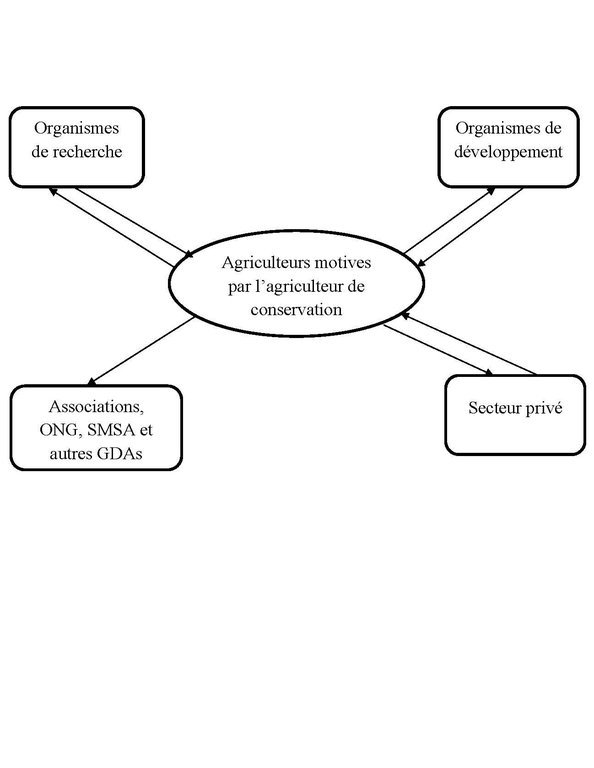
Author: Houcine Angar
Decision-making on the selection of SLM Technology
Decisions were taken by
-
land users alone (self-initiative)
-
mainly land users, supported by SLM specialists
-
all relevant actors, as part of a participatory approach
-
mainly SLM specialists, following consultation with land users
-
SLM specialists alone
-
politicians/ leaders
Decisions were made based on
-
evaluation of well-documented SLM knowledge (evidence-based decision-making)
-
research findings
-
personal experience and opinions (undocumented)
Technical support, capacity building, and knowledge management
The following activities or services have been part of the approach
-
Capacity building/ training
-
Advisory service
-
Institution strengthening (organizational development)
-
Monitoring and evaluation
-
Research
Capacity building/ training
Training was provided to the following stakeholders
-
land users
-
field staff/ advisers
Form of training
-
on-the-job
-
farmer-to-farmer
-
demonstration areas
-
public meetings
-
courses
Subjects covered
Sciences du sol, botanique, agronomie, et hydraulique.
Advisory service
Advisory service was provided
-
on land users' fields
-
at permanent centres
L'agriculteur est actif et motivé, qui cherche l'information et le conseil par ses moyens propres à l'extérieur de pays (CIRAD).
Monitoring and evaluation
Research
Research treated the following topics
-
sociology
-
economics / marketing
-
ecology
-
technology
Financing and external material support
Annual budget in USD for the SLM component
-
< 2,000
-
2,000-10,000
-
10,000-100,000
-
100,000-1,000,000
-
> 1,000,000
Precise annual budget: n.a.
The following services or incentives have been provided to land users
-
Financial/ material support provided to land users
-
Subsidies for specific inputs
-
Credit
-
Other incentives or instruments
Financial/ material support provided to land users
Intrants agricoles (semences, produits phyto-sanitaires, fertilisant..), matériel agricole (semoirs, pulvérisateurs...), frais du transport de matériel agricole.
partly financed
fully financed
equipment: tools
Location gratuite des pulvérisateurs (projets et organismes de développement).
agricultural: seeds
Projets et organismes de développement.
agricultural: seeds: fertilizers
voyages d'échange
Projets et organismes de développement.
Labour by land users was
-
voluntary
-
food-for-work
-
paid in cash
-
rewarded with other material support
Other incentives or instruments
Voyages d'échange au Maroc, Algérie, France, Brésil, Liban, Syrie, Portugal, Espagne, Australie, Inde, Burkina Faso...
Impact analysis and concluding statements
Impacts of the Approach
No
Yes, little
Yes, moderately
Yes, greatly
Did the Approach empower local land users, improve stakeholder participation?
Développement des amitiés, solidarité, échange de conseil.
Did the Approach enable evidence-based decision-making?
Échange des connaissances et expériences grace à des observations directes.
Did the Approach help land users to implement and maintain SLM Technologies?
Échange des connaissances et expériences grace à des observations directes.
Did the Approach improve coordination and cost-effective implementation of SLM?
Did the Approach improve knowledge and capacities of land users to implement SLM?
Did the Approach improve knowledge and capacities of other stakeholders?
Did the Approach build/ strengthen institutions, collaboration between stakeholders?
Did the Approach mitigate conflicts?
Did the Approach empower socially and economically disadvantaged groups?
Support pour les petits agriculteurs.
Did the Approach encourage young people/ the next generation of land users to engage in SLM?
Did the Approach lead to improved food security/ improved nutrition?
Did the Approach improve access to markets?
Did the Approach lead to improved access to water and sanitation?
Did the Approach improve the capacity of the land users to adapt to climate changes/ extremes and mitigate climate related disasters?
Renforcement de la perception des effets des changements climatiques.
Did the Approach lead to employment, income opportunities?
Main motivation of land users to implement SLM
-
increased production
-
increased profit(ability), improved cost-benefit-ratio
-
reduced land degradation
-
reduced risk of disasters
-
reduced workload
-
payments/ subsidies
-
rules and regulations (fines)/ enforcement
-
prestige, social pressure/ social cohesion
-
affiliation to movement/ project/ group/ networks
-
environmental consciousness
-
customs and beliefs, morals
-
enhanced SLM knowledge and skills
-
aesthetic improvement
-
conflict mitigation
Sustainability of Approach activities
Can the land users sustain what hat been implemented through the Approach (without external support)?
L'agriculteur est convaincu par l'efficacité de la technologie.
Conclusions and lessons learnt
Strengths: land user's view
-
Amélioration des connaissances à partir d'autres expériences et des observations directes.
-
Amélioration la confiance en soi.
-
Support et conseil.
Strengths: compiler’s or other key resource person’s view
-
Améliorer les connaissances des effets des changements climatiques.
-
Renforcer le développement et l'extension de la technologie.
-
Renforcer la durabilité de la technologie.
-
Améliorer la convinction par l'utilité de la technologie.
Weaknesses/ disadvantages/ risks: land user's viewhow to overcome
-
Disponibilté en terme du temps.
Définir un planning pour les rencontres et les échanges selon le calendrier cultural.
-
La distance qui sépare les membre du réseau.
Planifier les lieux de rencontre.
-
Non institualisation.
Structurer et formaliser le réseau.
Weaknesses/ disadvantages/ risks: compiler’s or other key resource person’s viewhow to overcome
-
Manque d'un statut clair.
Institualiser le réseau pour pouvoir accorder des subventions et établir des conventions.
References
Editors
-
Donia Mühlematter
-
Houcine Angar
Date of documentation: Mei 16, 2018
Last update: Mei 25, 2018
Resource persons
-
Houcine Angar - SLM specialist
Full description in the WOCAT database
Documentation was faciliated by
Institution
- Institut National des Grandes Cultures (INGC) - Tunisia
Project
- Decision Support for Mainstreaming and Scaling out Sustainable Land Management (GEF-FAO / DS-SLM)
Links to relevant information which is available online
